-

Close encounter with reef shark
Accustomed to divers' presence, reef sharks circle around, waiting for the feeding to begin. -
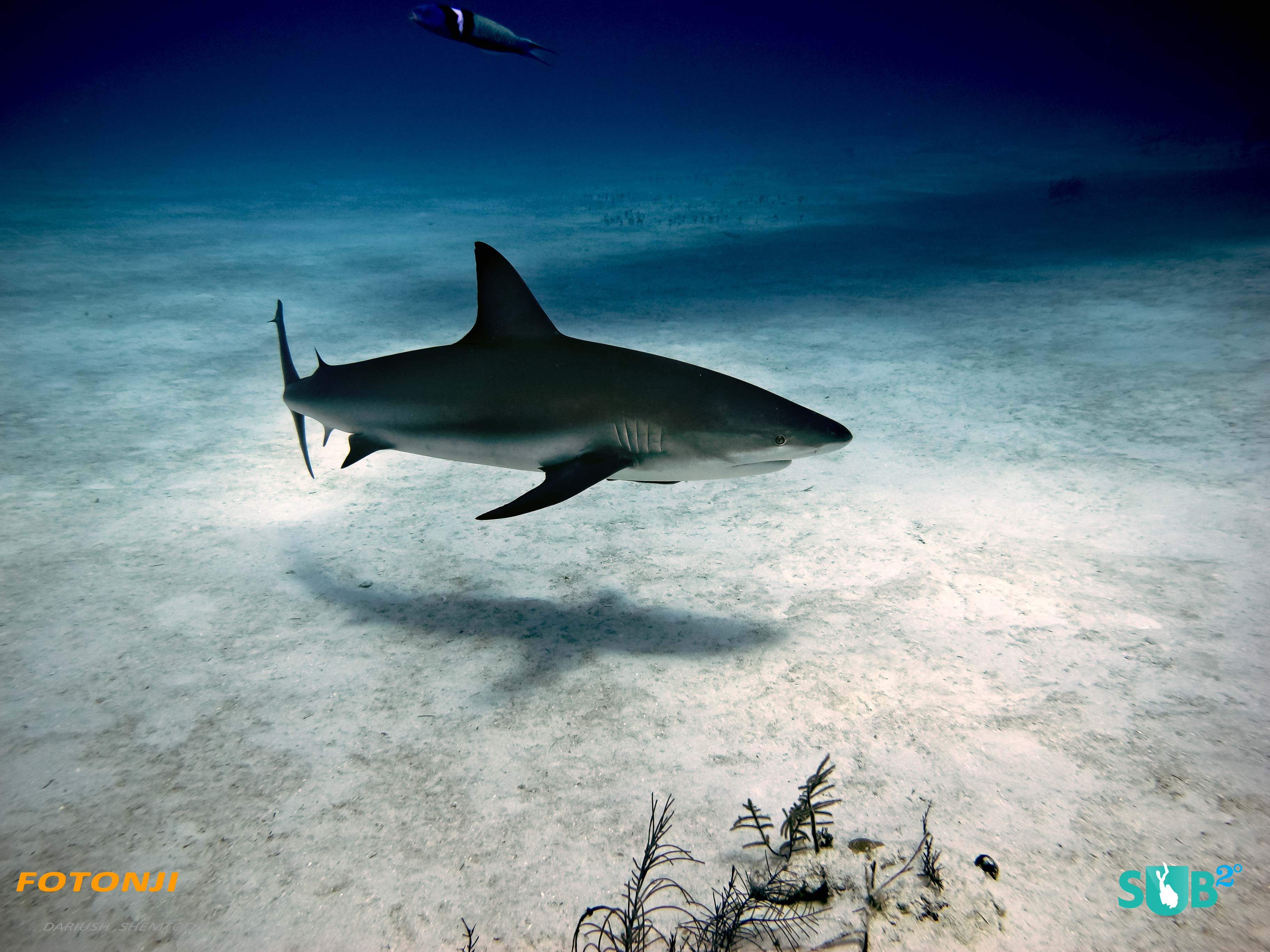
Out from the Shadows
Nassau is well known for its crystal clear waters. -
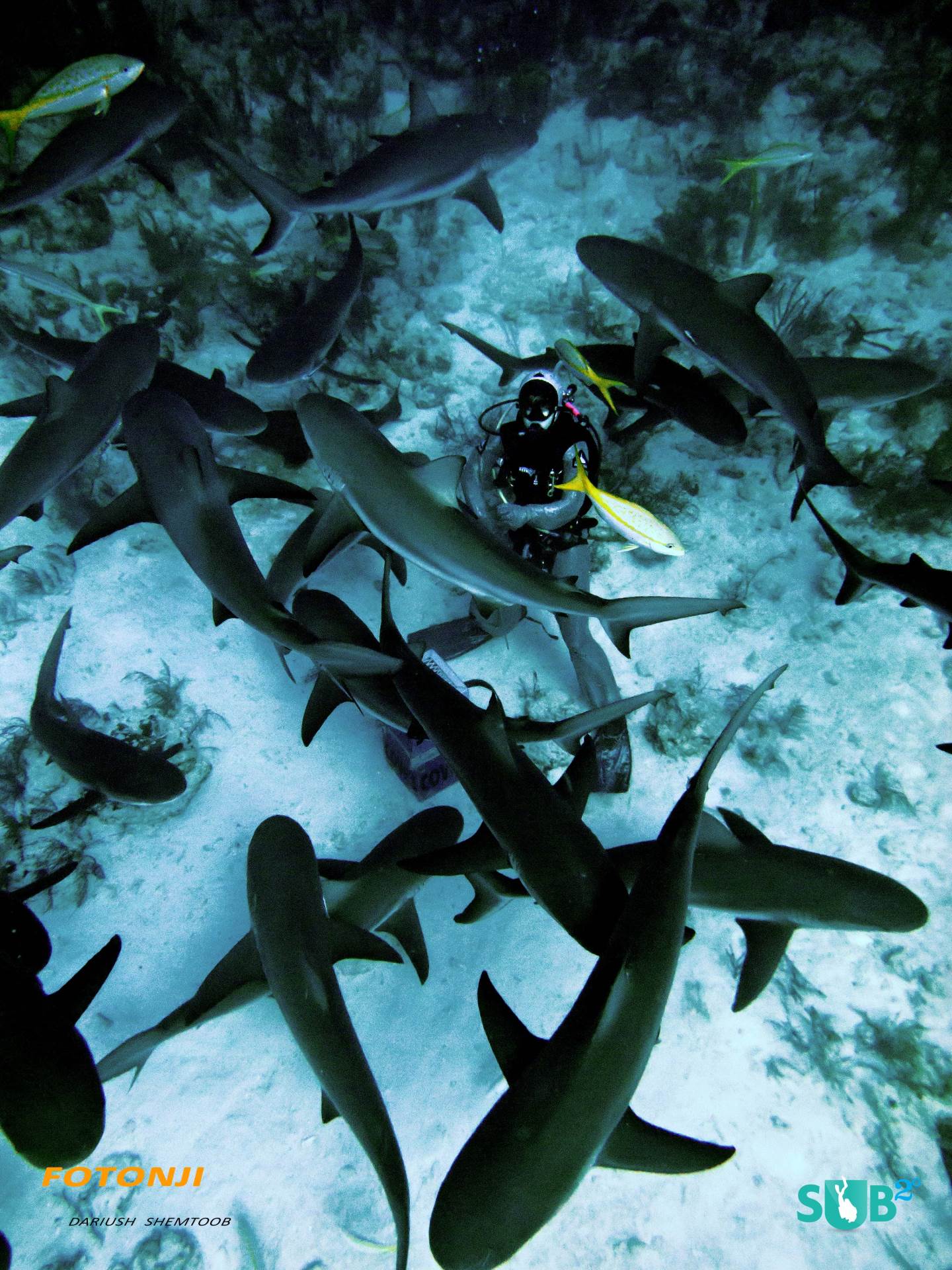
Major Tom
Ring leader distracting the sharks with the chum bucket while divers exit the water. -
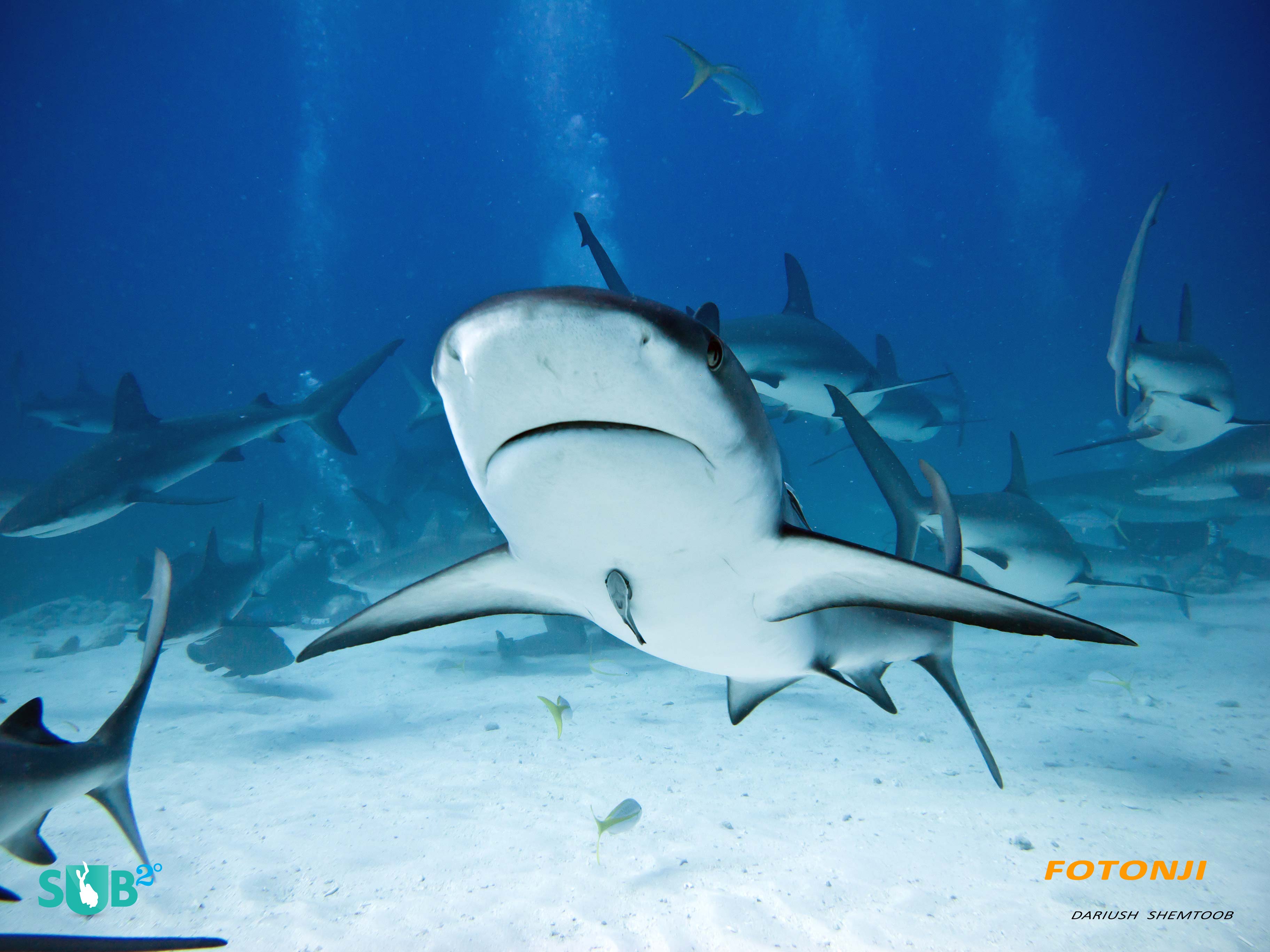
Passing by
During the feeding frenzy, sharks pass overhead at great speeds. -
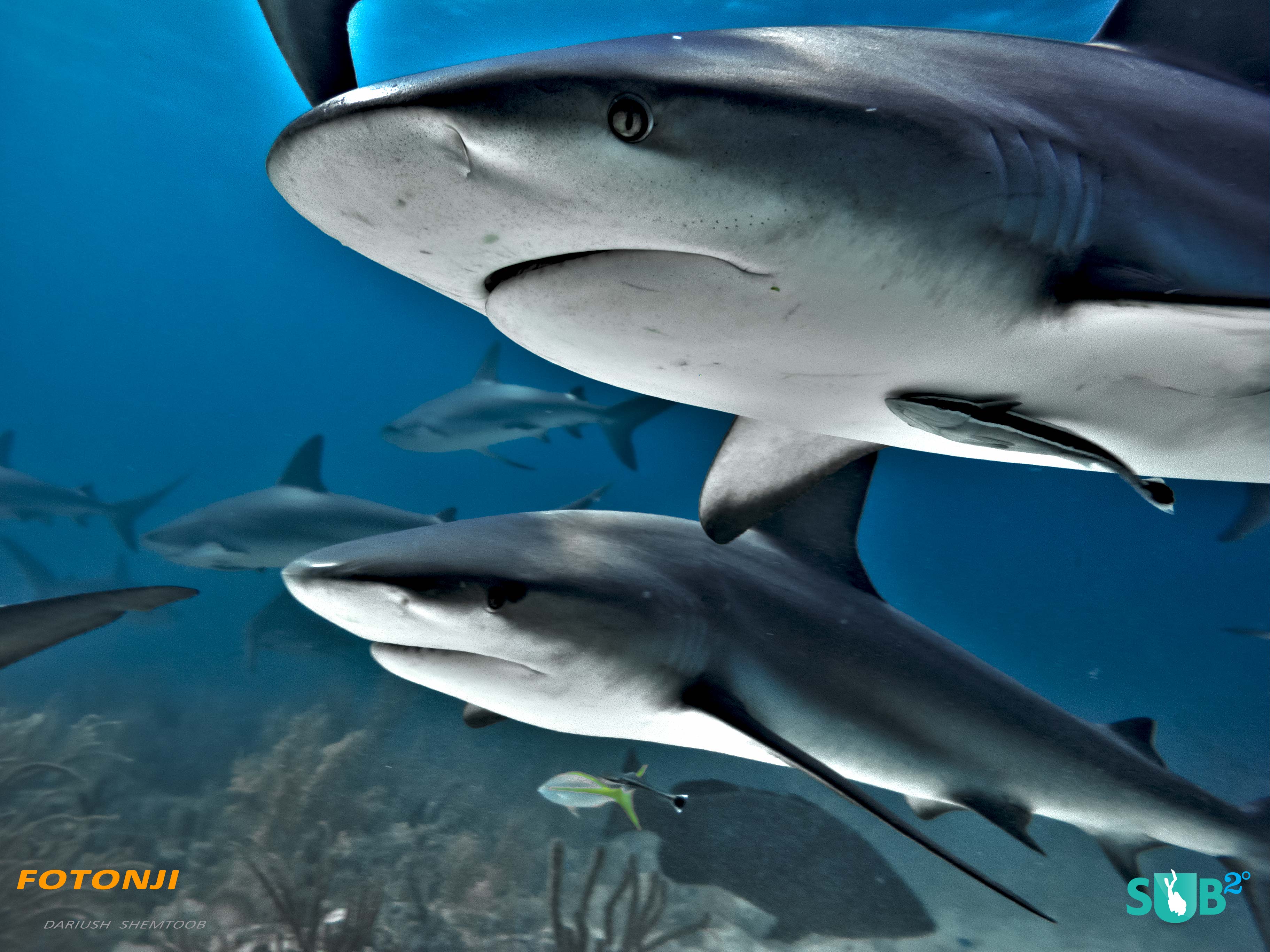
Hand in Hand
Raw HDR, one of many techniques to avoid clipping the bright underbelly of this male/female duo while maintaining contrast.
Sharks of the Bahamas
Diving with Sharks in the Bahamas has come a long way since the 70’s James Bond movies. Today the Bahamas host a very long list of tourist attractions catering to the daily cruise-ship crowds descending on the islands for a short stay and travelers from near and far seeking its sunny white sand beaches.
Diving in the Bahamas offers exceptional rewards by way of comfortable weather, sunny skies, crystal clear waters and relatively healthy reefs. Considering the annual hurricane season, barrage of cruise ships docking daily at each of its ports and the tourism driven commercialism, the Bahamas are faring well.
Geography
A short hop from the east coast of the US, the Commonwealth of the Bahamas consists of over 700 islands and cays stretching between southern part of Florida to the north of Cuba and Hispaniola (Dominican Republic and Haiti). Only 30-40 of its islands are inhabited with New Providence (home to capital city of Nassua), Grand Bahama and Great Inagua being among the largest and most developed islands.
The climate in the archipelago is subtropical, consisting of two seasons, with average high temperatures ranging between 77-89F and average low temperatures rarely falling below 62F.
The Bahamas are well within the Hurricane belt - officially lasting from June to November. Most hurricanes in the Bahamas occur between July and October. It’s worth mentioning that the highest point in the Bahamas (Mount Alvernia on Cat Island) is only 63m above sea level.
Access
The islands can be reached by numerous daily flights from several major airports on the east coast, Florida being the dominant. Visa on arrival can be arranged at Nassau’s international airport for short stays. Other Islands within the archipelago can be reached internationally or through domestic airlines.
As the islands “developed”, to cater to tourists and maximize their potential, dive shops evolved to well oiled operations with air conditioned storefronts, fleet of dive boats, and in some cases even individual submarine-enabling submersion without the use of SCUBA gear. Some dive shops are geared to serve divers from cruise ships timing the dives to match their schedule.
Anatomy of a shark dive
Shark dives evolved as one of the main attraction on these islands since encounters were abundant and almost unavoidable. To improve probability of encounters and increase excitement levels, operators moved to guided shark feeding dives.
Similar to many other shark dives across the globe, these dives are well scripted and rely heavily on behavioral conditioning of the sharks, taking place at designated times and locations.
Typically the boat leaves the dive shop equipped for a two-tank dive. Both dives are typically conducted in the same area. The first dive leads the divers to a nearby attraction, such as a wreck or reef where sharks can be observed casually while passing by.
This dive allows the operators to measure each diver’s experience level and ensure that they can handle the encounters. Second dive is the real deal.
During the surface interval between the two dives, the team, led by the wranglers, will provide a brief that covers the topography of the dive site, diver arrangement in the arena, the importance of extra weights (to ensure comfortable sitting at the bottom, especially after inhaling half of your tank’s air w/o exhaling), and dos and don’ts and emergency scenarios.
U/W photographers receive some additional attention to ensure they understand the potential risks associated with abandoning their assigned posts and most importantly, how operating their gear can be interpreted by the sharks as snack offerings.
After reaching the bottom, the dive guides position each diver in a designated area. In the Bahamas it usually means sitting on the withe sand bottom in a circle roughly 30-40ft in diameter.
The wrangler, wearing a still mesh suit and helmet, is positioned at the center of the ring, usually with a small chum bucket, and before you know it, the 10-20 sharks that were going in and out of view a few minutes ago all rush toward the center of the arena waiting for their treats.
Words cannot do justice to the ensuing frenzy. The commotion created by divers’ air bubbles draws the sharks circling above closer and they gradually become more excited. As tension builds up, their movements become faster and more erratic, and soon what looked like vultures circling above in slow motion turns into missiles shooting in and out of the circle. At this point collisions are unavoidable.
Drawn by pieces of chum and seeking the fastest way to it, sharks pay little to no attention to the divers and occasionally hit them in an attempt to outswim others. Smells of floating chum and the overall commotion draws several other species of large fish.
The show goes on for about 15-25min depending on depth. Once the chum bucket is nearly emptied out, things slow down a bit and it is at this point that the wrangler might choose to display an act of “dare-devil-ness” attempting to put one of the sharks in a catatonic state by turning it on its back and offering some divers to get closer.
Ethical and environmental implications of shark feeding are subject to individual values. Shark dives may attract divers seeking the opportunity of facing sharks or force them to choose a more environmentally conscious dive shop. In either case, safety and awareness are key, and should not be taken lightly.
Further Reading
Overview of Scuba Diving in The Bahamas
Directory of Dive Shopes in The Bahamas
Directory of Dive Sites in The Bahamas
Epic Shark Diving Expeditions in the Bahamas
Featured Posts
-
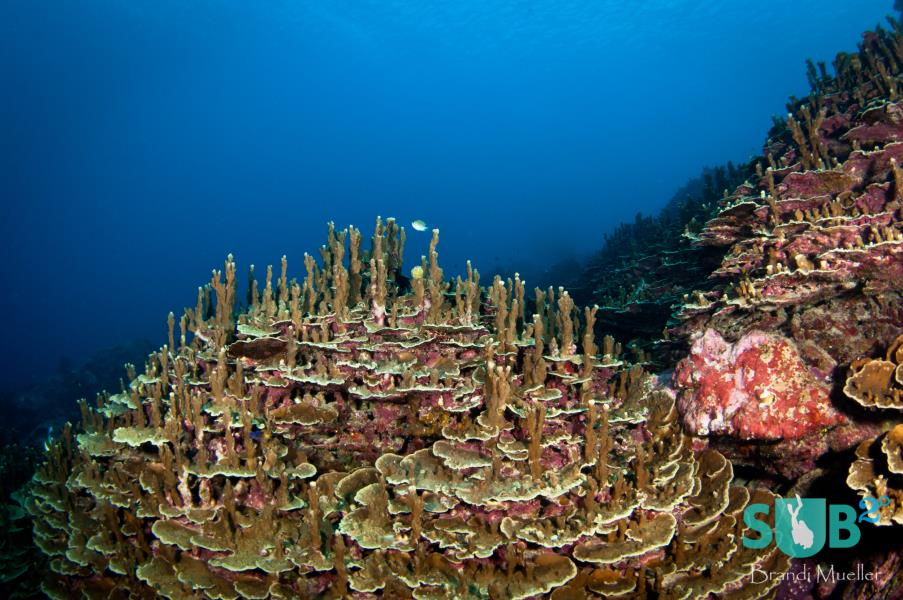
The Unique Diving of Guam
Often overlooked, the island of Guam is surrounded by fantastic diving. White sand beaches and calm, clear waters invite divers to explore the ocean and see the healthy coral and plentiful fish populations below.
-

Papua New Guinea's Milne Bay
Papua New Guinea is one of the world's best dive destinations and Milne Bay offers fantastic reef diving and muck diving in the same location. Clear waters and phenomenal creatures make for an excellent dive trip that’s enti...
-
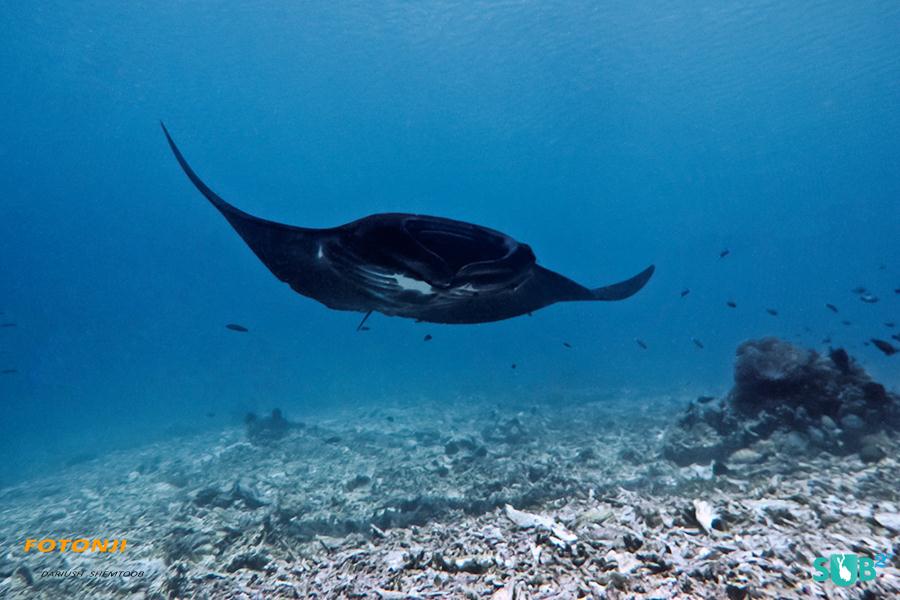
Jurassic Encounters at Komodo...
The last and only habitat for the Komodo dragon, the waters of the national park are home to some of the most amazing displays of life.

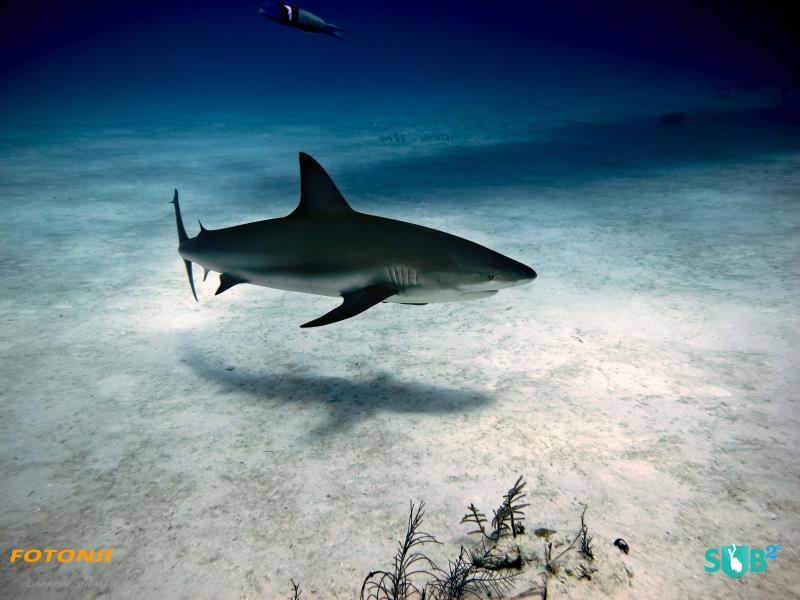
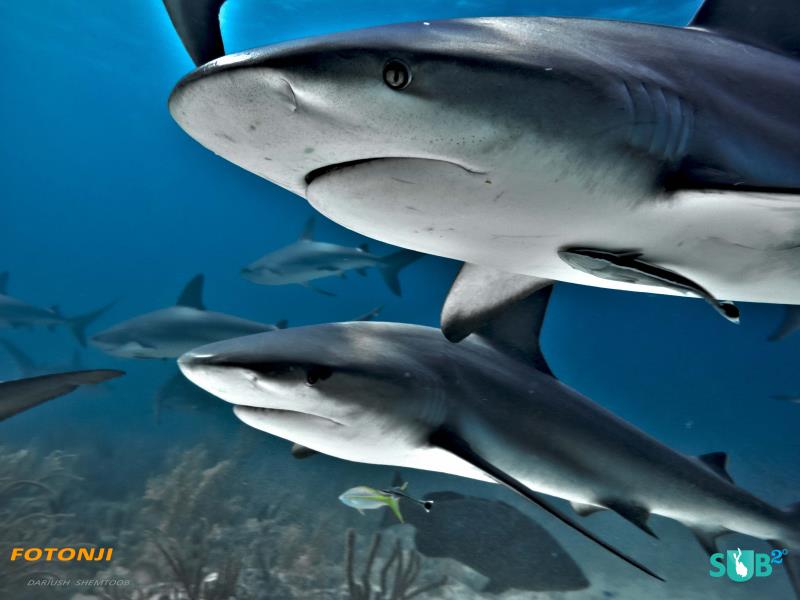
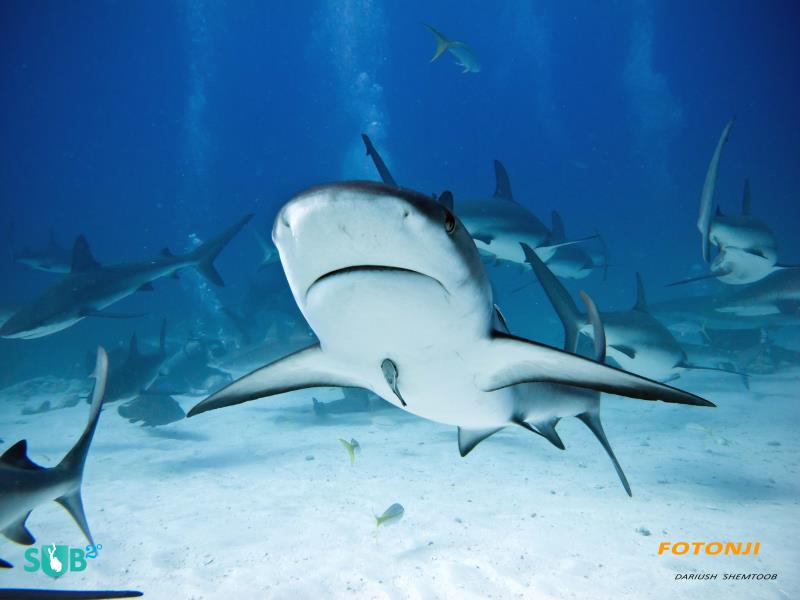
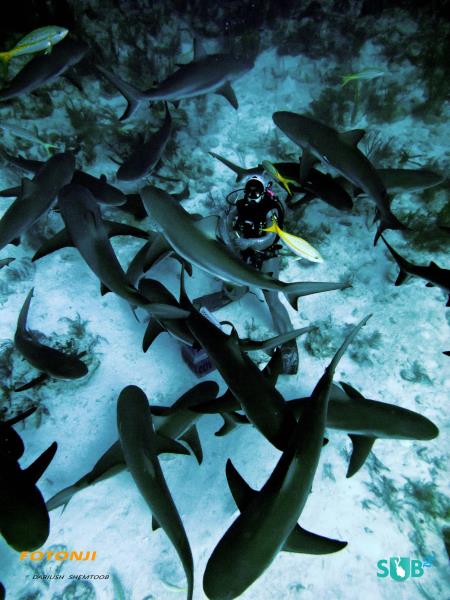


Load more comments